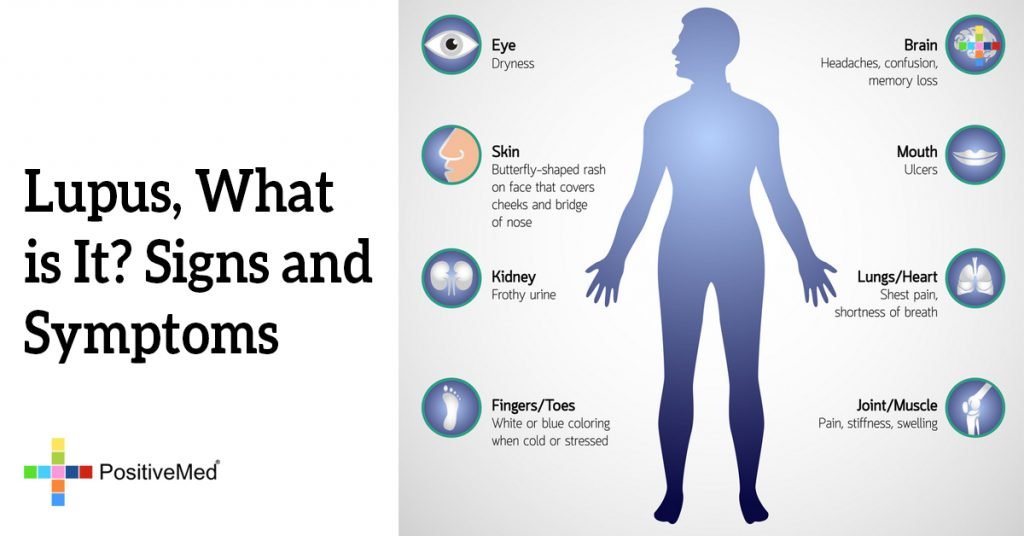
Lupus is a chronic inflammatory disease that occurs when your body’s immune system attacks it’s own systems and organs. Lupus can affect joints, skin, blood cells, brain, heart, lungs, and kidneys. Lupus occurs most often in women aged 15-40 who are of African-American, Asian, and Hispanic descent. It’s a disease that can be hard to diagnose as the symptoms mimic many other common ailments. The distinctive “butterfly rash” on the face is a defining symptom, but not everyone gets it. The most true test is the presence of lupus antibodies in the blood.
Lupus can have sudden onset, or slow progression of symptoms, it can also completely disappear for a while and come back during a period called a “flare.” Some people are able to live completely normal lives except for the flare periods, others have symptoms that are always present, sometimes worse than others.

You should see your doctor if you have unexplained rash, fever, persistent aches or fatigue. Sunlight and cold can worsen symptoms, certain medications can also bring on symptoms.
Symptoms include, but are not limited to:
- butterfly facial rash
- disc-shaped lesions
- low grade fever
- fatigue
- headaches
- confusion
- memory loss
- joint pain
- muscle aches
- mouth sores
- sensitivity to sun
- sensitivity to cold
- unexplained weight loss
- swollen lymph nodes
- anemia
- nausea
- Shortness of Breath
- Chest pain
- dry eyes
- tingling, numbness, coldness of hands and feet
- red/purple areas on palms and fingers
There will be another part to this series covering treatments, causes, and other information.
Source: http://www.mayoclinic.com/health/lupus/DS00115/DSECTION=complications







